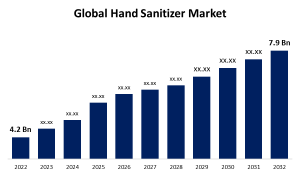Hand Sanitizer Trends: What’s In and What’s Out in 2025
As we progress through 2025, the hand sanitizer market continues to evolve, influenced by consumer preferences, technological advancements, and global health considerations. This article delves into the emerging trends shaping the hand sanitizer industry and highlights the fading practices that are being replaced.
What’s In: Emerging Hand Sanitizer Trends in 2025
The hand sanitizer landscape in 2025 is characterized by innovation and a focus on consumer experience. Key trends include:
1. Eco-Friendly and Sustainable Formulations
With increasing environmental awareness, consumers are gravitating towards hand sanitizers made from natural ingredients and sustainable packaging. Brands are incorporating plant-based components and biodegradable materials to cater to this demand. For instance, researchers at Parul University in Vadodara have developed a herbal organic hand sanitizer using plant extracts like cinchona and aloe vera, offering an alcohol-free alternative that is both effective and gentle on the skin.
2. Multi-Functional Products
Consumers are seeking products that offer more than just sanitization. Hand sanitizers now often include additional benefits such as moisturization, skin nourishment, and pleasant fragrances. Touchland, for example, has introduced its Power Essence Mist, a hair and body mist that combines hydration with appealing scents like Lush Tropicale and Vanilla Velvet.
3. Portable and Stylish Packaging
Hand sanitizers are becoming fashion accessories, especially among younger demographics. Compact, sleek, and colorful packaging has made sanitizers trendy items to carry. Touchland’s $10 sanitizers have become a status symbol among teens, who collect and trade them for their appealing designs and scents.
4. Smart Dispensers and Touchless Technology
Advancements in technology have led to the development of touchless hand sanitizer dispensers. These devices use sensors to dispense sanitizer without physical contact, promoting hygiene and reducing the spread of germs. The global hand sanitizer dispenser market is projected to reach USD 1.2 billion in 2025, growing at a higher CAGR of 7.0% from 2025 to 2035.
What’s Out: Phasing Out Old Practices in 2025
As new trends emerge, certain practices and products are becoming obsolete:
1. Overly Alcoholic Formulations
While alcohol-based sanitizers have been effective in killing germs, excessive alcohol content can lead to skin dryness and irritation. Consumers are now preferring products with balanced formulations that include moisturizing agents and natural ingredients to maintain skin health.
2. Single-Use Plastic Packaging
The environmental impact of single-use plastics has led to a decline in their use. Brands are shifting towards recyclable, biodegradable, or reusable packaging to align with sustainability goals and consumer preferences.
3. Generic, Unbranded Products
With the rise of premium and personalized hand sanitizers, generic, unbranded products are losing their appeal. Consumers are now looking for brands that offer unique scents, packaging, and additional benefits beyond basic sanitization.
FAQs
Q1: Are alcohol-free hand sanitizers as effective as alcohol-based ones?
A1: Alcohol-free hand sanitizers can be effective, especially when formulated with natural antimicrobial agents. However, their efficacy may vary, and it’s essential to choose products that meet recognized standards.
Q2: How can I ensure my hand sanitizer is eco-friendly?
A2: Look for products that use biodegradable ingredients, recyclable or reusable packaging, and natural components. Certifications like “organic” or “cruelty-free” can also indicate environmentally conscious products.
Q3: Are touchless dispensers more hygienic?
A3: Yes, touchless dispensers reduce the risk of cross-contamination by eliminating the need for physical contact, promoting better hygiene practices.
Q4: Can hand sanitizers replace handwashing?
A4: While hand sanitizers are effective in killing many germs, they do not remove dirt and debris as effectively as handwashing with soap and water. Handwashing is recommended when hands are visibly dirty.
Q5: Are there any safety concerns with hand sanitizers?
A5: Yes, there are several safety concerns associated with hand sanitizers:
Flammability: Alcohol-based hand sanitizers are highly flammable. It’s essential to keep them away from open flames and ensure they are stored properly to prevent accidents.
Ingestion Risks: Swallowing hand sanitizer, especially in large amounts, can be toxic and may lead to alcohol poisoning. It’s crucial to keep hand sanitizers out of reach of children and to supervise their use.
Methanol Contamination: Some hand sanitizers have been found to contain methanol, a toxic substance that can cause serious health issues, including nausea, vomiting, headaches, and even death. The FDA has issued recalls for products containing methanol.
Benzene Presence: Certain hand sanitizers have been found to contain benzene, a carcinogen. Consumers should be cautious and check for recalls or warnings related to benzene contamination.

Hand Sanitizer Trends: What’s In and What’s Out in 2025
